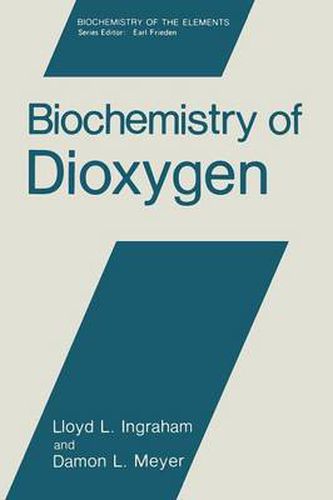Readings Newsletter
Become a Readings Member to make your shopping experience even easier.
Sign in or sign up for free!
You’re not far away from qualifying for FREE standard shipping within Australia
You’ve qualified for FREE standard shipping within Australia
The cart is loading…






This title is printed to order. This book may have been self-published. If so, we cannot guarantee the quality of the content. In the main most books will have gone through the editing process however some may not. We therefore suggest that you be aware of this before ordering this book. If in doubt check either the author or publisher’s details as we are unable to accept any returns unless they are faulty. Please contact us if you have any questions.
This book is written for the research biochemist who needs to know more about the particular field of dioxygen metabolism, whether this be for designing lectures for a graduate level course or for his or her own research needs. We hope researchers in a given area of dioxygen metabolism will gain knowledge of related fields of dioxygen metabolism. We have decided to use the term dioxygen to distinguish molecular oxygen from divalent oxygen in water and organic compounds, dioxygen being a simpler term than molecular oxygen. We do not intend to review the metabolism of all compounds that contain oxygen, since this would include all of biochemistry. An understanding of dioxygen chemistry is essential to the discussion of the biochemistry of dioxygen. While this statement could be made about any biochemical constituent, the chemistry of dioxygen is so unusual that interpre tations without detailed chemical background are futile. Prediction of dioxygen reaction products by analogy with other oxidants is impossible. The partial reduction products of dioxygen, superoxide ion and peroxides, develop naturally in the chemistry of dioxygen. It would be difficult to discuss dioxygen biochemistry without first discussing these partial reduction products.
$9.00 standard shipping within Australia
FREE standard shipping within Australia for orders over $100.00
Express & International shipping calculated at checkout
Stock availability can be subject to change without notice. We recommend calling the shop or contacting our online team to check availability of low stock items. Please see our Shopping Online page for more details.
This title is printed to order. This book may have been self-published. If so, we cannot guarantee the quality of the content. In the main most books will have gone through the editing process however some may not. We therefore suggest that you be aware of this before ordering this book. If in doubt check either the author or publisher’s details as we are unable to accept any returns unless they are faulty. Please contact us if you have any questions.
This book is written for the research biochemist who needs to know more about the particular field of dioxygen metabolism, whether this be for designing lectures for a graduate level course or for his or her own research needs. We hope researchers in a given area of dioxygen metabolism will gain knowledge of related fields of dioxygen metabolism. We have decided to use the term dioxygen to distinguish molecular oxygen from divalent oxygen in water and organic compounds, dioxygen being a simpler term than molecular oxygen. We do not intend to review the metabolism of all compounds that contain oxygen, since this would include all of biochemistry. An understanding of dioxygen chemistry is essential to the discussion of the biochemistry of dioxygen. While this statement could be made about any biochemical constituent, the chemistry of dioxygen is so unusual that interpre tations without detailed chemical background are futile. Prediction of dioxygen reaction products by analogy with other oxidants is impossible. The partial reduction products of dioxygen, superoxide ion and peroxides, develop naturally in the chemistry of dioxygen. It would be difficult to discuss dioxygen biochemistry without first discussing these partial reduction products.